
Dreamdata vs. Bizible: Which Is the Right Tool for You?
In the B2B industry, measuring and optimizing the impact of marketing efforts on revenue is quite challenging. This is because of lengthy, non-linear sales cycles involving several stakeholders and touchpoints.
Many multi-touch attribution tools are available in the market that help marketers and sales teams alike to solve this challenging task. Each of these tools have their own unique features and approach to attribution.
In this blog, we compare two such attribution tools - Bizible and Dreamdata and evaluate the features and pricing of both tools and help you select the right one for your business.
TL;DR:
- Adobe Marketo Measure, formerly known as Bizible, is an enterprise-grade platform, while Dreamdata is more suited for small to mid-sized companies.
- Dreamdata and Bizible are both B2B attribution and analytics platforms that empower their users with multi-touch attribution, predictive analytics, and content analytics.
- Dreamdata integrates with more softwares and tools compared to Bizible.
- According to user reviews from G2 and Capterra, Dreamdata ranks higher than Bizible when it comes to
- Ease of use
- Customer support
- Bizible is better than Dreamdata in terms of
- Custom attribution model
- Compliance
- When it comes to pricing Bizible is priced higher and requires additional spending for implementation and configuration.
- In the case of Dreamdata, small to mid-sized B2B companies can use the free version, while companies that require advanced revenue attribution can settle for a paid version that costs $999/month.
About Dreamdata

Dreamdata is a B2B revenue attribution platform that helps businesses connect data across their GTM martech stack and gain insights into their customers’ journey.
Additionally, the tool enables businesses to run custom account-based attribution models to track, measure, benchmark, and predict revenue of various channels in the buyer’s journey.
Dreamdata also maps every touchpoint in the customer journey. As a result, it helps users visualize customer journeys at an account level. According to G2, Dreamdata is the best fit for small to mid-market-sized businesses.
About Bizible [Now Marketo Measure]

Adobe Marketo Measure, formerly known as Bizible, is an enterprise-grade B2B attribution platform. The platform helps visualize the complete customer journey from the first touchpoint to the last.
This helps sales and marketing teams drive ROI and improve campaign influence on the pipeline.
Since Bizible was primarily built for Salesforce and Microsoft Dynamics, it offers a relatively seamless integration experience with the two platforms.
Dreamdata vs. Bizible: Common Features
Here, we identify and discuss the common features between Dreamdata and Bizible and explore how businesses can benefit from them.
Attribution models
Attribution is one of the core features both tools provide.
Both tools can track and identify touchpoints across different channels (online and offline). In addition, they both support a range of attribution models to attribute revenue to influential channels. When compared with each other
Bizible offers 6 attribution models.
- First Touch
- Lead Creation (Last Touch)
- U-Shaped
- W-Shaped
- Full Path (Linear)
- Custom Attribution Model
Dreamdata offers 8 attribution models
- First Touch
- First Touch Non-Direct
- Last Touch
- Linear
- Linear Non Direct
- U-Shaped
- W-Shaped
- Custom Attribution Model
Content analytics
Content marketing is a great way of engaging with B2B audiences. With content analytics businesses are able to tie content efforts to revenue and pipeline.
Bizible and Dreamdata provide valuable insights into content strategies. Content teams can use these insights to understand the performance of their efforts and optimize them to drive more MQLs.
When compared with each other, we find that Dreamdata’s content analytics feature helps users
- Measure the success of their content based on revenue and pipeline.
- Understand the topics and types of content that influence accounts the most at various stages of the pipeline.
- Identify the source driving the traffic to the content, whether it’s social, organic or paid.

With Bizible, marketers can
- Combine various reports to better understand what's driving engagement and conversions. Eg. A content based report can be combined with a MQL report to find what content is influencing MQL.
- Apply various attribution models to content pieces to identify how various sources have contributed to its performance.
- Use various filters to get specific insights. Eg. Identify what content brought traffic to a specific landing page or the type of content that leads download the most.
What Dreamdata Does Better
Here we identify the areas where Dreamdata has a clear upper hand when compared to Bizible
Integrations
When it comes to integrations, Dreamdata has a clear upper hand compared to Bizible.*

*Based on information available on the website and documentation.
Ease of use and setup
User ratings on G2 reveal that Dreamdata is much easier to use than Bizible. When it comes to ease of setup, Dreamdata is a clear winner.
Bizible, being an enterprise-level platform, requires a lot of time and effort to implement. Also, businesses may require a solutions provider to implement and configure Bizible.


.avif)

Customer support
Providing excellent customer support is crucial in B2B SaaS. It helps businesses build long-term relationships with their customers. Customer support and customer success also help
- Retain customers: Customers who are satisfied with the product and have their voice heard tend to stay. Retaining customers is much more cost effective than acquiring new ones.
- Increase customer loyalty: Loyal customers become product advocates and help spread information about the product through word of mouth.
- Gather feedback from customers: Suggestions, feedback, etc from customers can help improve the product and make it more valuable to the customers.
Both platforms have great customer support based on the user reviews from G2. But Dreamdata slightly outshines Bizible on this front.



.avif)
What Bizible Does Better
In this section we go over the areas where Bizible is better than Dreamdata.
Custom Attribution
One of Bizible’s advanced features is the custom attribution. This feature allows users to identify and choose touchpoints from the buyer journey that they want to include in the model.
The tool also empowers users to control the percentage of revenue attributed to the selected touchpoints. Alternatively, users can choose to use the suggested revenue attribution percentages suggested by Marketo Measure’s (Bizible) machine learning model.



Compliance
Dreamdata and Bizible comply with common data security and privacy standards such as GDPR and SOC 2.
But Bizible being an enterprise tool complies with additional international standards compared to Dreamdata. You can take a look at the complete list of certification each tool has below.

Dreamdata vs. Bizible: Pricing
A product’s pricing is a critical component for companies as it impacts revenue, profitability, competitiveness in the market among other factors. In this section we compare the pricing of the two tools.
Bizible Pricing
Bizible (Marketo Measure) does not have a transparent pricing policy. Therefore, interested visitors will have to get in touch with their team to get a custom quote for their business.

Pricing insights from G2 reveal that Bizible is 13% more expensive than the average attribution tool.
Also to note, is the cost incurred when hiring a separate IT solutions partner to implement and configure the tool. This makes Bizible an expensive tool and suited for larger organizations.
Dreamdata Pricing
Dreamdata offers both free version and paid plans.
- Team - $999 per month
- Business - A custom plan. Details are available upon request.

Though Dreamdata is on the expensive side, the free version suits small to mid sized B2B organizations while the paid version is more suited for B2B go-to-market teams that need advanced analytics and attribution.
Still Unsure Which B2B Attribution Tool To Go With?
The right attribution tools depend on your business’s requirements and goals.
If you are an enterprise grade organization that believes in the saying “If it’s not in Salesforce, then it doesn’t exist” or MS Dynamics for that matter, then Bizible is the best fit for you.
On the other hand if you're a new age small to medium sized organization using various platforms in your martech stack then Dreamdata is the one for you.
When compared to Bizible, Dreamdata
- Is relatively cheaper.
- Has more integrations.
- Is easy to use and implement.
- Is Less clunky as it uses a modern techstack and better UI/UX elements.

.But if you are still not convinced and would like to bargain for more, then we suggest you take a look at Factors.ai.
Factors has all the features that your business needs to
- Attribute revenue to your sales and marketing efforts.
- Analyze the performance of your website, paid and organic efforts
- And also, identify anonymous website visitors.

When compared to Bizible, Factors is much easier to implement. In fact our no-code integrations and onboarding support ensure that you can get started in 30 minutes.
The tool also integrates with more modern softwares used by B2B businesses. Factors integrates with
- Hubspot
- Facebook Ads
- LinkedIn Ads
- Google Ads
- Salesforce
- Segment
- Bing Ads
- Rudderstack
- Marketo
- 6Sense
- Clearbit
- Leadsquared
- Drift
- GSC
- Slack
- Google Spreadsheet
Factors when compared with Dreamdata complies with additional data and privacy standards. Factors is GDPR, SOC2 Type I and Type II compliant whereas the latter does not comply with SOC2 Type II.
Factors also provides businesses with more attributional models to work with compared to Dreamdata and Bizible. The 9 attribution models available in the platform are
- First Touch
- First Touch Non Direct
- Last Touch
- Last Touch Non Direct
- Linear
- W Shaped
- U Shaped
- Time Delay
- Influence
Below are some of the features that our users love and that are not available in Bizible and Dreamdata.
- Advanced web analytics: - Factors automatically tracks all user interactions in the website. There is no need for the users to set up custom tracking or spend time on other tools for visitor behavior analysis. Some of the interactions that Factors track are
- Page Time Spent
- Scroll Depth
- Page Count
- All Button Clicks
- Product Milestones
- Form Fill Attempt
- Custom UTMs (apart from the regular UTMs)

- Account identification: - Factors website account identification capabilities are extremely useful for businesses looking to know who's visiting their website. By identifying anonymous account-level traffic and what they engage with the most businesses can create personalized marketing and sales efforts to succeed in Account Based Marketing.
- Path analysis: - This feature provides insight into the user interactions at each stage of the customer journey. It also reveals the most influential path that converts visitors into leads.

- Custom funnel analysis: - Generate focused funnel reports by adding necessary KPIs and events from both website and CRM.
- Slack alert: - Users get notified in real-time whenever there is any anomaly in KPIs or when an event occurs. Eg When MQL has filled a demo form the sales team can immediately reach out to them or when the CPC of a campaign has shot up by 25% in the last week compared to the previous week.

Read more about Factors’ features.

Factors Pricing
Factors apart from offering more features compared to Bizible and Dreamdata, it is priced relatively lower than both. There is also a 14-day free trial

The paid plans for Factors attribution solutions are as follows:
- Starter - $399 per month (0 - 10K monthly visits)
- Growth - $799 per month (10 - 100K monthly visits)
The details on the Custom and Agency plan is available upon request. Visit the pricing page to know more.
Both tools offer strong attribution capabilities but cater to different business scales.
1. Bizible (Adobe Marketo Measure): Enterprise-level solution with advanced, customizable attribution models.
2. Dreamdata: Intuitive and accessible, ideal for small to mid-sized B2B teams.
3. Strategic Fit: Selection depends on company size, budget, and complexity of attribution needs.
Understanding your business requirements helps you choose the tool that delivers accurate insights and maximizes ROI.

Content Reporting: Tips and Best Practices to Create the Right Dashboards
Content managers spend the bulk of their time drawing up content briefs, editing email newsletters, and collaborating with marketing teams to ensure they set the right tone. Detailed content reporting on key metrics is essential for content managers to iterate and curate effectively going forward. This blog highlights the importance of content reporting as well as a few best practices to create relevant content dashboards.
What is content reporting?
Content marketers use content reporting to analyze the performance of their assets across website, organic channels, social media, syndication and more.
Modern content reporting eliminates the need for manual analysis. Instead of juggling between several unintuitive tools, marketers can use a unified, interactive dashboard to reflect holistic information about content performance.
This has the benefit of centralizing all your reporting and getting relevant insights to you in real-time. Metrics that content marketers keep track of to optimize their content performance include clickthrough rate (CTR), bounce rate, time on page, and website traffic through the identification of unique visitors.

Why is content reporting important?
It’s imperative for your content marketing team to create high-value content for your target audience. In order to do this, you have to understand how your target audience is responding to the content you’ve already put out. Once you figure out how different content resonates with different personas, you can create more content that is relevant to their journey at each stage of the funnel. Ultimately, this improves the customer experience and drives more conversions.
In a nutshell, content reporting helps marketers:
1. Understand which content performs well
Content makes up a significant proportion of any B2B company’s expenses. It’s important that you get the best results from the time and money your company puts into its marketing efforts. Dedicated content reporting based on metrics such as engagement (including time spent, scroll depth, bounce rate, and pageviews) or conversions (such as influenced demos and pipeline) gives you a keen idea of the type of content your target audience is looking for.
2. Measure the impact of content across the sales funnel
Marketing teams are increasingly being asked to tie their efforts back to pipeline and revenue. With comprehensive content analytics and reporting in place, marketers can connect the dots between distribution channels, assets, and bottom-line metrics.
With path analysis and account journey mapping, marketers can pin-point how prospects are interacting with blogs, case-studies, white papers, etc before turning into MQLs, SQLs, and pipeline. With multi-touch attribution, marketers can determine which assets initially bring in top-of-the-funnel leads and which assets help influence the final conversion to paying customers.
Content analysis and reporting at this level helps prove content marketing’s impact on high level business objectives and improves content strategy by shedding light onto what works and what doesn't.
3. Streamline content production, distribution, and repurposing
Content reporting allows you to see what content provides value to your prospects when they’re at the bottom, middle, or top of the funnel respectively. You’ll therefore be able to streamline content production and offer prospects and clients content that’s relevant to them.
Your target audience’s needs are constantly evolving, though–which means your content also has to do the same. Dedicated content reporting will help you assess whether certain channels or posts are underperforming with respect to crucial content metrics. This information helps you know when you need to refresh your content. You can also see which content is performing well, so you can repurpose it for further use.
4. Optimize the process and minimize overheads
When you know which channels and content help to bring the most leads and conversions, you eliminate any shots in the dark about the conversion process.
You’ll be able to make more educated guesses about which marketing channels to invest in based on past trends. This allows you to cut down on marketing expenditure that doesn’t bring in results, and focus your energies towards high-value content creation and distribution on channels that will resonate with your target audience.
5. Understand what type of audience engages with each content piece
Content marketing teams often produce loads of ungated assets without actually knowing who the final consumer of their content is. Visitor identification tools like Factors.ai help identify anonymous accounts visiting the website — along with firmographics such as the visitor’s industry, employee headcount, and revenue range.
This provides unprecedented visibility for content marketers to gauge who their audience really is and what types of content appeal most to them. For example, maybe visitors from enterprise-level companies prefer content around security and privacy compliance. Early-stage start ups, on the other hand, may find content around pricing more relevant.
Visitor identification helps content marketers tailor assets towards their ideal audience and promote relevant content going forward.This, in turn, helps improve the odds of conversion along the customer journey.
What should you include in a content report?
Some metrics are more valuable than others when it comes to content reporting. Most free tools such as Google Analytics only provide the bare minimum to track content performance. This includes clicks, impressions, social-shares, and bounce rates. No doubt, these are useful metrics — but only when used in conjunction with other, granular KPIs, filters, and breakdowns.
For example, aggregate bounce rate on Google analytics is a metric that measures the number of visitors who drop off from a website after visiting a single page. In B2B, this is a remarkably ineffective metric unless broken down by B2B segment such as industry, revenue range and so on. Only then can marketers compare variations in bounce rates to discern how different assets influence different sets of audiences.
Your content team should employ tools that are able to measure metrics that industry experts recommend keeping track of for detailed content analysis. This includes:
- Scroll depth: The scroll depth is an engagement metric that encapsulates how deep a user scrolls down your landing page or blog content. Typically, a scroll depth of 50% or more means that your content is resonating with visitors.
- Conversion rate: The conversion rate represents the number of users who converted as a ratio of the total visitors to your website. If your product interests prospects, or your content addresses website visitors’ pain points, they are more likely to convert. Another version of this is the Marketing Qualified Lead (MQL) to Sales Qualified Lead (SQL) conversion rate.
- Impressions: Your impressions indicate how much engagement your content generates. This content could be anything: an article, a blog, or one of your web pages. The impressions metric helps you understand the performance of your social media and search engine marketing campaigns.
- Time on page: Like the scroll depth, the time a prospect spends on a web page or blog post indicates their interest in your service.
- Unique users: The number of visitors to your website can be challenging to calculate, since it’s essential that each unique visitor be counted only once, regardless of how often they visit your website.

Your content reports also need detailed but easily understandable visualizations that allow you to make beneficial decisions at a glance. A content marketing dashboard should immediately help you grasp how key metrics are changing to drive efficient decision-making related to content and attribution.
Best practices to create effective content dashboards
Your content dashboard should show you everything you need to create an effective content strategy on the same page. Here’s how your marketing team can ensure it has the best possible content dashboard:
1. Understand the metrics you’re using
How is each metric connected to your strategic goals or overall revenue? Asking this question helps to streamline the information on your dashboard so it only shows you relevant metrics. Your marketing team needs to understand how each metric displayed corresponds to the company’s goals to effectively adapt the marketing strategy accordingly.
2. Set the right goals
Not all your goals have to be connected to revenue–some of them can be associated with your company’s strategic goals, such as acquiring prospects in a certain industry sector or locality. Metrics such as the influenced pipeline, for example, are not associated with revenue but with the success of your marketing efforts. Tracking the right metrics while keeping company goals in mind allow you to focus on growth.
3. Make data easy to consume
While deciding which metrics to include in your visualizations, ask yourself the following questions:
- Who/what is this visualization for?
- Does a specific metric help you make quicker and better marketing decisions? If the answer is yes, include it.
- Which visualizations are easiest to understand for each metric?
- How can each piece of data be connected to your company’s overall revenue?
4. Include comparison data
Comparison data is crucial for keeping track of progress. A dashboard incorporating comparison data will often employ graphs and charts that display how certain metrics have changed over selected quarters, for instance. This data helps you see how much closer you are to achieving company goals than before.
5. Don’t forget about influenced pipeline
Measuring how marketing has influenced pipeline helps you see what marketing content influences a lead’s decisions and how. Essentially, the influenced pipeline shows you the real impact of your marketing efforts, and informs you about the channels that most contribute to conversions. It helps you understand the buyer’s journey in greater detail.
Are there any tools to help with content reporting?
Tools like Factors offer analytics and multi-touch attribution dashboards, along with dedicated content reporting. You’ll be able to see all of your important metrics in one place, along with detailed, comprehensive visualizations that allow you to easily understand your company’s marketing strategy performance at a glance.

Factors’ attribution features also help combine all this information with your customer relationship management (CRM) software entries. This allows you to have a holistic understanding of each buyer’s journey, complete with the touch points that encouraged conversion and the content they found most useful.
Effective content reporting helps teams evaluate performance and refine strategies with clarity.
1. Core Focus: Track KPIs like engagement, conversions, and traffic quality through dynamic dashboards.
2. Best Practices: Align reports with business goals, segment data by audience, and update regularly.
3. Strategic Benefits: Enable informed decisions, highlight content impact, and improve marketing ROI.
Well-structured reporting transforms raw data into strategic value, driving smarter content and business outcomes.
Conclusion
Effective content reporting is a critical aspect of developing and adapting your content marketing strategy to current trends in the market. Book a demo with us today to find out how Factors can help your company with effective analytics, attribution, and reporting.
FAQs
1. What does a good content report look like?
A good content report includes key metrics for content marketing and visualizations that allow you to make quick and important marketing decisions on a single dashboard. Visualizations involving comparison data are also important, as they help you understand progress in performance.
2. What’s in a content report?
A content report displays changes in engagement and conversion metrics, and detailed analyses of how different types of content are performing across the various marketing channels your company employs. It should connect each metric to specific company goals, and also include easily understandable visualizations for quick decision-making.
.avif)
Factors vs ZoomInfo Pros and Cons: Detailed Comparison
Looking to choose between Factors and ZoomInfo? While these tools seem similar at first glance, they are quite different tools that are designed to solve different problems. Let’s break down what each tool does best so you can figure out which one aligns more effectively with your team’s goals and priorities.
TL;DR
- Factors tracks marketing and sales performance, connects multi-channel attribution, and provides actionable ROI insights to optimize strategies.
- ZoomInfo offers a vast contact database, enriched company insights, and tools for high-volume sales outreach, ideal for enterprise scalability.
- ZoomInfo excels in reliable contact discovery, detailed company data, and supporting large-scale sales development efforts.
- Factors stands out with advanced campaign analysis, seamless CRM integration, and superior LinkedIn ad performance tracking.
The Big Picture: What Sets Factors and ZoomInfo Apart
ZoomInfo is a massive contact database, making it an essential tool for finding people's contact information and gathering company-specific information. Do you have a target account? ZoomInfo will tell you who works there, their role, contact details, and key company information, like the company’s tech stack and growth signals.
Factors, on the other hand, focuses on understanding how your marketing and sales efforts are performing. It's not just another analytics tool - it connects all your marketing channels like LinkedIn, email, ads, and website interactions into one platform. Unlike traditional analytics tool, this lets you see which combination of touchpoints drives revenue, helping you refine your sales and marketing strategies.
Also read: A guide to marketing attribution.
{{INLINE_CTA_A}}
Who Uses Each Tool? Target Users and Teams That Benefit Most
Factors is ideal for mid-sized and enterprise companies with 51 to 1,000+ employees. These teams focus on making data-driven decisions and gaining deep insights into their marketing and sales performance. General use cases include:
- SaaS companies analyzing which marketing channels drive enterprise deals.
- Technology companies optimizing for LinkedIn ads and email campaigns to see how they work together to convert high-value accounts.
- Enterprise marketing teams tracking and improving multi-channel attribution and aligning sales and marketing efforts.
ZoomInfo is most effective for large enterprise companies and sales teams that need access to reliable contact data at scale. It is especially valuable for:
- Sales development teams (SDRs) with 100+ members managing high-volume outreach to thousands of prospects.
- Businesses expanding into new markets where extensive contact data and company insights are critical.
The Technical Details That Matter: Key Features You Need to Know
API Access: Seamless Integration or Limited Flexibility?
API access is a critical feature that often gets overlooked. With Factors, you get API access is provided by default. This means you can:
- Automatically sync account engagement data with your CRM.
- Build custom dashboards that combine data from multiple sources.
- Create automated workflows based on account behavior.
- Pull data into your own data warehouse for custom analysis.
ZoomInfo only gives API access to their enterprise customers. So if you're not on their top tier plan, you’ll likely manually export data or copy-paste contact information. It's time-consuming and not fun if you're trying to build automated workflows.
{{INLINE_CTA_A}}
Working with LinkedIn
If LinkedIn is a big part of your marketing strategy, here's something interesting: Factors has much deeper LinkedIn integration than ZoomInfo. This is because ZoomInfo competes with some of LinkedIn's products (like Sales Navigator), while Factors functions more like a partner to LinkedIn.
Now, what does this mean in practice? With Factors, you can:
- Track which target accounts are engaging with your LinkedIn ads. Read more about this on Factors and LinkedIn integration.
- See how LinkedIn campaigns influence deals alongside other channels.
- Get better matching between LinkedIn data and your CRM data.
- Control the frequency of ads shown to each target account.
- Understand which LinkedIn ad formats work best for different account segments.
- Measure the true ROI of your LinkedIn spend, and not just platform metrics.
Playing Nice with Other Tools
ZoomInfo operates like a ‘walled garden.’ It has got features like call recording and sales engagement within its ecosystem. It's great if you want everything from one tool, but it can have limited flexibility.
Factors takes the opposite approach. Need to use different contact databases for different regions? No problem. Want to keep using your current sales engagement platform? Go for it. Here's what that flexibility looks like in practice:
- Use ZoomInfo for North American contacts but another provider for the European region.
- Keep using your preferred sales engagement tool while tracking all activities with Factors
- Mix and match tools for different teams or regions without breaking your analytics.
- Add or remove tools seamlessly, keeping your marketing and sales data intact.
{{INLINE_CTA_A}}
The Data Story: When to Choose Factors vs ZoomInfo
ZoomInfo's Strength
- It offers a huge database with over 200+ million business contacts.
- Boasts a 90% accuracy rate, especially strong in North America.
- A dedicated research team constantly updates data.
- Ideal for finding decision-makers in target accounts.
- Provides technographic and firmographic data.
- Displays org charts and reporting relationships.
- Tracks company news and updates.
Factors' Approach
- It focuses less on contact data and more on understanding behavior.
- Really good at identifying who's visiting your website and their engagement.
- Particularly strong in tech and SaaS industries.
- Shows you the full journey of accounts that convert.
- Tracks engagement across multiple channels, including:some text
- Website visits and specific page views
- Email opens and clicks
- LinkedIn Ad impressions and clicks
- Form submissions and downloads
- Sales touches and meetings
- Product usage signals
- Connects this engagement data directly to revenue outcomes.
Real-World Use Cases: When to Choose Factors vs ZoomInfo
When to Choose Factors
Factors is ideal for businesses facing complex attribution, marketing optimization challenges, or the need for tighter sales and marketing alignment.
- Attribution Gets Complexsome text
- You're running multi-channel ABM campaigns.
- Multiple teams are involved in engaging each account.
- Sales cycles are long and include many touchpoints.
- You need to demonstrate how marketing contributes to revenue.
- Marketing Spend Needs Justificationsome text
- You're investing heavily in LinkedIn or other platforms.
- Budget decisions need solid ROI data.
- Marketing channels are competing for resources.
- You need to optimize spend across regions or account segments.
- Sales and Marketing Alignment is Crucialsome text
- Teams require shared visibility into engagement data.
- Marketing needs to prove its influence on deals.
- Sales teams need insights into marketing interactions.
- You want to coordinate outreach effectively across multiple channels.
{{INLINE_CTA_A}}
When to Choose ZoomInfo
ZoomInfo is best for businesses focused on scaling sales outreach, enriching CRM data, or conducting high-volume contact discovery.
- Contact Discovery is a Prioritysome text
- Sales teams need to find the right people quickly.
- You’re expanding into new markets and need reliable contact data.
- Account research is a regular part of your workflow.
- You require org charts and reporting relationships for decision-makers.
- Data Enrichment is Essentialsome text
- Your CRM data needs cleaning and updating.
- You want to segment accounts by technographics or firmographics.
- Keeping company information current is critical.
- You need to track job changes and organizational shifts.
- Sales Development at Scalesome text
- Large SDR teams require dependable, accurate data.
- You’re conducting high-volume outreach to thousands of prospects.
- Territory planning depends on precise and up-to-date data.
- Growth signals like funding rounds or hiring trends need tracking.
Pricing Comparison
Factors’ Pricing Approach
Factors offers a free plan to help businesses get started, which includes:
- Identification of up to 200 accounts monthly.
- 5,000 monthly visitor tracking.
- Basic attribution features.
For paid plans, pricing scales are based on:
- The number of accounts tracked.
- Traffic volume.
- Feature requirements.
Key advantages of Factors’ pricing:
- Monthly billing is available for flexibility.
- No hidden fees or surprise costs.
- Designed to work well for smaller budgets.
ZoomInfo's Pricing Model
ZoomInfo operates on a custom quote system. Pricing depends on several factors, including:
- Number of user licenses.
- Amount of contact credits needed.
- Access to specific features.
- Contract length (annual contracts required).
- Credit-based system for data exports.
Key points about ZoomInfo’s pricing:
- Typically more expensive, reflecting its focus on enterprise clients.
- Designed for larger budgets and high-scale sales operations.
Also, check ZoomInfo pricing and alternatives for more information.
The Support Experience
Factors’ Support
Factors offers personalized and customer-focused support:
- Highly rated on G2 for customer satisfaction.
- Provides 24/7 chat support with quick response times.
- Dedicated Customer Success Manager (CSM) to build custom workflows.
- Ongoing training and regular check-ins.
- Assistance with setup, integration, and custom reports.
ZoomInfo’s Support
ZoomInfo provides a more formal, structured support process:
- Extensive training resources and larger support teams.
- Includes documentation, guides, video tutorials, and regular webinars.
- Primarily tailored for enterprise clients.
{{INLINE_CTA_A}}
Integration Capabilities: How Factors and ZoomInfo Work with Your Stack
Factors Integrations
Factors seamlessly integrates with a wide range of platforms:
- CRM systems (e.g., Salesforce, HubSpot).
- Marketing automation platforms.
- Ad platforms (Google, LinkedIn, Facebook).
- Sales engagement tools.
- Custom applications via API access.
- Data warehouses and BI tools.
- Web analytics platforms.
ZoomInfo Integrations
ZoomInfo offers integrations but is more limited in scope:
- Native CRM integrations.
- Its own sales engagement platform.
- Chrome extension and email integration.
- Built-in dialer and mobile app.
- Marketing automation sync.
- API access is restricted to enterprise customers.
Factors and ZoomInfo each offer unique advantages for businesses aiming to optimize B2B marketing.
1. Platform Strengths: ZoomInfo provides vast contact databases and company insights for large-scale outreach; Factors tracks marketing and sales performance with multi-channel attribution.
2. Key Features: Factors offers actionable ROI insights and enhanced LinkedIn ad performance; ZoomInfo supports enterprise scalability and extensive prospecting.
3. Strategic Fit: ZoomInfo suits enterprises, while Factors is designed for mid-to-large businesses seeking data-driven decision-making.
Select the platform that aligns with your business size, goals, and need for performance optimization.
Bottom Line
Here's what it comes down to: if you're trying to understand your marketing performance, track revenue, and keep flexibility in your tech stack, Factors is probably your best bet. You'll get better insights into what's actually driving deals, especially if you're running complex, multi-channel campaigns.
If your focus is scaling sales outreach, finding decision-makers, and enriching contact data for large teams, ZoomInfo is the better choice. It delivers reliable, up-to-date contact information to support enterprise-level sales efforts.
Both tools solve different problems. Focus on your team’s priorities—marketing performance or sales enablement, and pick the one that fits your strategy.
{{INLINE_CTA_A}}

How To Use Intent Data To Drive Pipeline (Part I)
All Roads Lead To Revenue
There’s no doubt that top of the funnels like traffic and opportunities remain important indicators to B2B marketers. But increasingly, high-growth marketing teams are held accountable for bottom-line business metrics like pipeline and revenue.
That being said, driving deals is easier said than done. With limited budgets, tight competition, and volatile markets, go-to-market teams need an efficient alternative to make the most of their resources.
Enter: Intent data
Intent data captures buyer intent so you can identify, target, and convert high-fit sales-ready accounts. Here’s what this means for your team:
- Intent-based outreach, as opposed to cold outreach
- Targeted ABM efforts, as opposed to spray and pray tactics
- Deal acceleration for existing or lost accounts in the pipeline
When used efficiently, intent data can wring out every bit of ROI from existing marketing and sales efforts. The following guide highlights how to leverage intent data to drive more pipeline, with less spend.
What Is Intent Data?
Intent data is any data that provides information about customer behavior and buyer intent across campaigns, websites, review sites, or more. There are 4 types of intent data: zero-party, first-party, second-party, and third-party:
- Zero-party intent data: Data that a buyer explicitly shares. (Eg: demo form with Name and Email fields)
- First-party intent data: Data that’s collected from buyer’s interaction with a business. (Eg: Web sessions, page views, button clicks, etc)
- Second-part intent data: Data collected from another company’s first-party data (Eg: First-party data from review sites like G2 or Capterra)
- Third-party intent data: Aggregated data from multiple sources (Eg Bombora intent data)
Why’s Intent Data Important?
1. Efficiency gains: Just a few years ago, businesses were ready to buy, buy, buy. These days, companies are far more conservative. Longer sales cycles, lower win rates, and shrinking contract values all point towards this.
That's why prospects that are considering your solution are that much more important. However, only about 5% of website traffic actually converts — leaving the remaining 95% of visiting accounts completely anonymous.
Using intent-data in tandem with account identification tools helps discover, qualify, and convert up to 64% of sales-ready companies already visiting your website. Tap into a pool of mid/bottom of the funnel accounts who are yet to convert with zero additional spend. Here are a few questions you can answer:
- Which ICP accounts visited a landing page through a search ad but didn’t submit a demo form?
- Which companies are reading bottom of the funnel product blogs at least 50% of the way?
2. Early-intent detection: Studies find that buyers are 57% along the buyer journey before contacting a sales rep. Fifty. Seven. Percent! By this stage, in-market accounts have done their research and formed a rough idea as to which vendor they’re leaning towards.
Intent data helps identify buyer intent much, much before a form is submitted. This gives teams a significant first mover advantage in establishing the initial evaluation criteria, building relevant relationships, and improving the odds for a higher ACV.
It would mean beating competitors to the sales by reaching out to sales-ready prospects before anyone else does. While getting there first isn’t everything, it certainly helps.
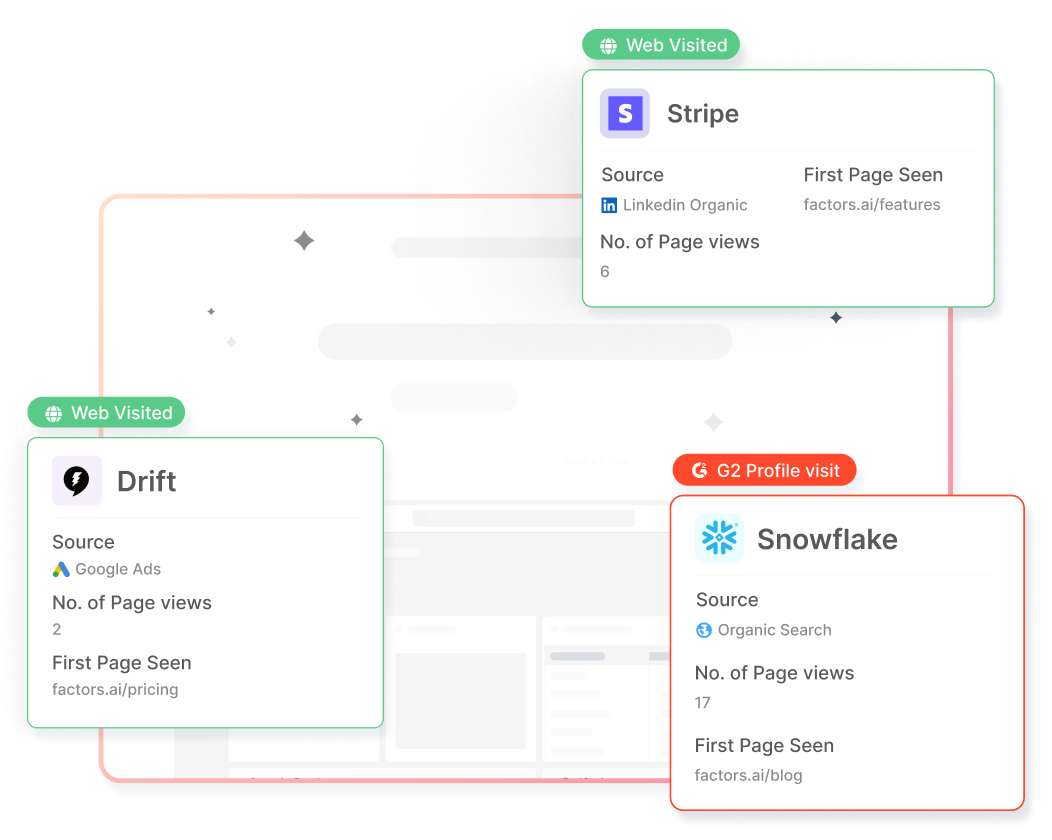
Ingredients To Leverage Intent Data
We’ve established that intent data is pretty valuable. But how to collect intent data? Who should be involved? And what’s a comprehensive way to leverage this data to drive pipeline? This section covers the tools, people & process that make intent data work.
1. Tools
Here are all the tools you’ll need to identify, track, report, and activate intent data.
1. Intent Data Providers
Data is essential to make this work. Start by identifying a handful of sources for various types of intent data. This doesn’t have to be complex or expensive, the following tools are a great starting point:
- First-party data - Factors.ai, 6sense
- Second-party data - G2, Trustradius, Capterra
- Third-party data - Bombora, Leadsift, Contentgine
Factors is a account intelligence tool that delivers industry-leading IP-lookup technology to identify up to 64% of companies visiting your website. This includes company name, firmographics (industry, headcount, revenue-range, etc), and behavioral data (page views, scroll-depth, button clicks, etc)
2. CRM
A CRM acts as a single source of truth to unify intent data for the entire GTM engine across sales, marketing, and customer success. You’re likely already using a CRM such as HubSpot or Salesforce. Other alternatives include Zoho, Pipedrive, and Leadsquared.
3. Enrichment Database
Once accounts visiting the website have been qualified for fit and intent, use an enrichment database to identify the appropriate people to reach out to. A few popular enrichment tools include:
- Apollo
- Zoominfo
- Lusha
- LeadIQ
4. Sales Engagement
The following sales engagement tools help sales reps and marketers automate the outreach process across multiple channels including email, phone calls, and social media:
- Outreach
- Outplay
- Salesloft
- Klenty
- LinkedIn Sales Navigator
5. Internal Communications
Push real-time alerts to internal communication tools like Slack or MS teams when new companies or existing leads from target companies are live on the website.
We’ll cover how each of these tools work in tandem in the process section of this article.
2. People
These are the stakeholders and responsibilities involved in mastering intent data.
- Marketing: Assign a demand gen lead or program manager to stay on top of all things marketing
- Sales: Assign a sales manager to stay on top of all things sales. Onboard a team of SDRs/AEs to activate the intent data by reaching out to high-intent leads and nurturing mid-intent prospects.
- Operations: Given that this is a relatively elaborate, data-heavy workflow, assign a mar/sales ops to setup the initial framework, ensure accurate reporting, and
- Data & research: While several tools can identify accounts visiting your website, it’s impossible to reveal the exact individual visitor. If possible, onboard a researcher to enrich company-level visitor data with the appropriate prospects to reach out to within each company. A researcher to sales rep ratio of 1:4 is recommended, but not necessary.
- Executive sponsorship: Needless to say, it’s important that senior executives are aligned on who’s working on what, and why. There must be clarity in terms of deliverables for each function involved in the process.
3. Process
Bringing it all together, is the following 4-stage, 8-step intent program process to leverage intent data.
.avif)
1. Stage One: Identify & Notify
As previously mentioned, there are several types of intent data. When it comes to setting up an intent-based outreach program, it’s best to start with first-party website IP-to-company identification data. For one, the website is the most voluminous touchpoint in a B2B/SaaS buyer journey. For another, starting with account identification from website traffic is a low-effort, high-impact initiative involving minimal investment.
The remainder of this article zeroes-in on leveraging first-party account identification data. That being said, the process remains largely the same for other types of intent data.
Step 1: Invest in an account identification tool
When it comes to account identification tools, there’s no shortage of alternatives. Here’s why we recommend Factors over others:
- Better data-accuracy: Factors taps-into 6signal — an industry-leading account identification to reveal up to 64% of anonymous website visitors. That’s 27% more than the likes of Clearbit or Kickfire.
- Cost-effective plans: Plans start as low as $99/month including dedicated onboarding support and customer success management. More pricing details here: factors.ai/pricing
- Advance analytics: Given that Factors is built on strong account analytics foundations, users can achieve granular visibility into website KPIs, visitor behavior, and account timelines.
Step 2: Filter accounts based on fit and intent
Of course, not all website traffic will make a great fit for your business. Refine the total set of accounts identified to just those that fit your ideal client profile using firmographic and technographic filters.
For example, maybe you’re only interested in companies visiting your website that meet the following criteria:
- Industry: Software, IT, Education
- Geography: US & Canada
- Employee headcount: Under 500
- Technology: HubSpot, Google Ads
But even still, not every one of these companies may be ready to buy. With Factors, you can filter down the list of ICP companies to high-intent accounts based on their engagement. For example, maybe you’re only interested in ICP visitors that spend at least 60 seconds on high-intent pages such as pricing or features.

Step 3: Notify stakeholders in real-time
Once a criteria for high-intent, ICP accounts has been established, use Factors to push real-time alerts on Slack, MS teams, or Email when accounts that match this criteria are live on the site. This notification may be shared with sales reps to take action while the iron’s still hot.


Phew…this is a pretty involved read so we’ve split the remaining three stages of this intent program here: How To Use Intent Data To Drive Pipeline Part II. Read on to understand how to enrich, engage, and convert sales-ready accounts with intent-data and account identification.
This guide highlights the importance of intent data in modern B2B marketing. By analyzing zero-, first-, second-, and third-party data, businesses can identify high-fit, sales-ready accounts. Intent-based outreach allows for more precise Account-Based Marketing (ABM), moving away from generic approaches. This strategy enhances engagement with prospects already showing buying intent, maximizing ROI by focusing resources on those most likely to convert.

The Complete Guide to Building A SaaS CMO Dashboard
Tracking campaign performance across marketing channels can be a tedious and unintuitive process. CMOs often have to rely on individual department reports to gather a summary of how the team is performing – an endeavor that leaves many gaps and relies heavily on guesswork.
In addition to the time it takes to compile reports, derive actionable insights, and chart next-steps, the traditional way of doing things is prone to several manual errors.
The solution? The perfect CMO dashboard that helps streamline your work based on relevant analytics and metrics under one roof.
This article shows how powerful CMO dashboards can be used to drive data-driven business decisions.
TL;DR
- CMO dashboards offer a holistic view of customer data-related metrics and KPIs through intuitive visualizations.
- The benefits of SaaS companies using CMO dashboards include rapid decision-making, sensible use of time and resources, improved ROI, and unified visibility of marketing performance.
- Before you build a comprehensive CMO dashboard, pay close attention to user-friendly design, use helpful visualizations, integrate platforms to consolidate data, and measure the right metrics/KPIs.
- SaaS businesses must track metrics/KPIs such as conversions, leads, traffic, conversion rates, acquisition cost per channel, retention and churn rates, customer lifetime value, and revenue and pipeline velocity by channel source. A CMO dashboard helps visualize these metrics and KPIs with clarity.
What is a CMO dashboard?
A CMO dashboard is a tool that reports and visualizes KPIs and metrics related to a company's marketing activities across demand gen, content, paid, events, and more. It is a centralized, bird’s eye view that helps marketing executives monitor and analyze marketing initiatives and performance in real-time.
There is no hard and fast rule to building a CMO dashboard for your SaaS company. That being said, there are certain elements that are essential for marketing leaders to identify patterns, track progression, and optimize strategies to drive bottom-line business objectives.
We’ll explore these essential ingredients in later sections of this blog.
Why do CMOs need to use dashboards?
Here’s a look at the top benefits of using a well-designed CMO dashboard:
1. Improves decision-making
When making expensive business decisions, relying on guesswork can cost you heavily. CMO dashboards help marketing leaders make well-informed and accelerated decisions based on data-driven insights.
For example, a CMO dashboard can help you identify which channels and marketing campaigns are not performing if you're making budget-related decisions. It also enables you to identify the reason behind poor campaign performance and the following steps to be taken.
Let's say you have the company blog, paid advertising, and podcasts as key marketing channels. A deep dive into the dashboard will help you uncover how much revenue each channel can generate, the cost of leads from each touchpoint, and how long it typically takes them to convert.
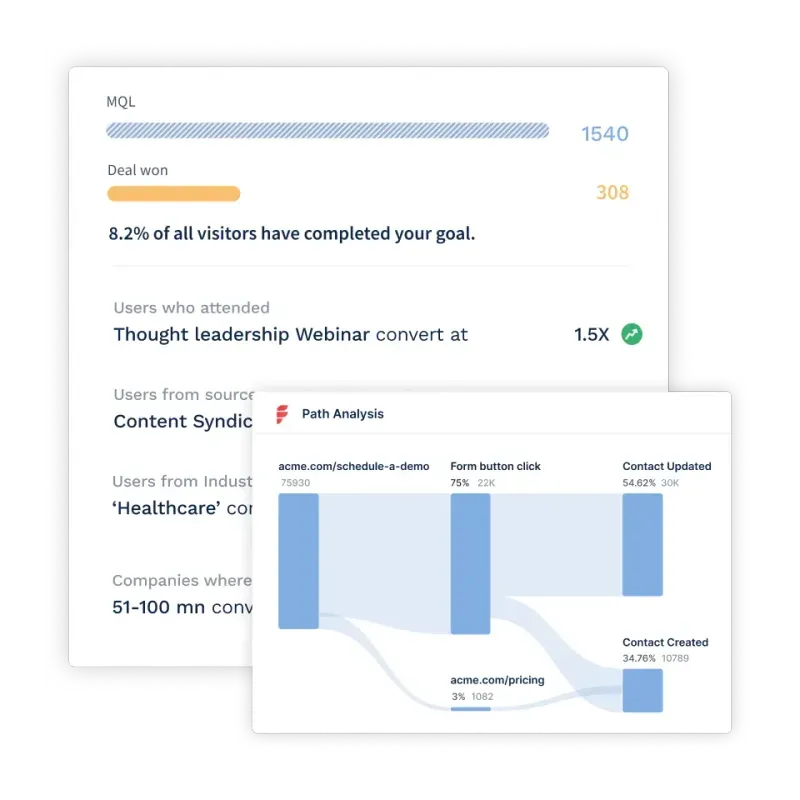
2. Offers a quick overview of data without wasting time and resources
A CMO dashboard lets you save hours of work and wasted resources on collecting and processing raw data from scratch.
CMO dashboards extract and present an accurate overview of essential data from platforms or sources such as LinkedIn, Facebook, YouTube, articles, Google Ads, and more.
For example, let’s say you’re calculating the number of sessions on your website that come through various channels. A CMO dashboard will gather the data from all the channels, creating an easy visual for you to see which has driven the most sessions.
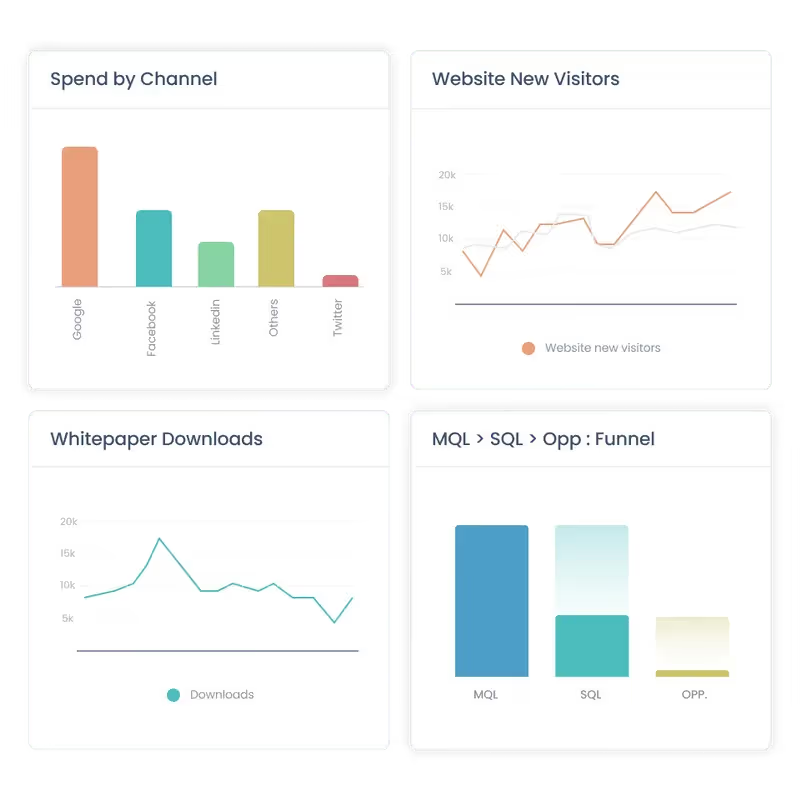
3. Helps identify trends and patterns
With all the data condensed onto one dashboard, CMOs and their teams can collectively take note of repetitive patterns in their target audience. This helps them further understand which type of campaigns work well on what channel and when leading to the ability to adapt campaign resources on the go.
For example, the company publishes a blog on the website every Tuesday. But they also post a video on LinkedIn on the same day. Over time, a CMO dashboard can display which content formats perform better on Tuesdays, helping the team double down their focus on that channel alone.
Key considerations when building a CMO Dashboard
An effective CMO dashboard is the central hub for monitoring marketing performance, aligning teams, and driving data-backed decisions. When designed thoughtfully, it becomes an invaluable strategic asset.
1. Intuitive and action-oriented design
A CMO dashboard is defined by its ease of use and ability to drive decisions. A cluttered, text-heavy layout overwhelms users with data but does not provide enough context to make decisions.
In contrast, a clean, visual interface tells a straightforward performance story that connects insights to actions and helps make data-backed decisions. Here are a few considerations for an insightful dashboard.
Prioritize key metrics
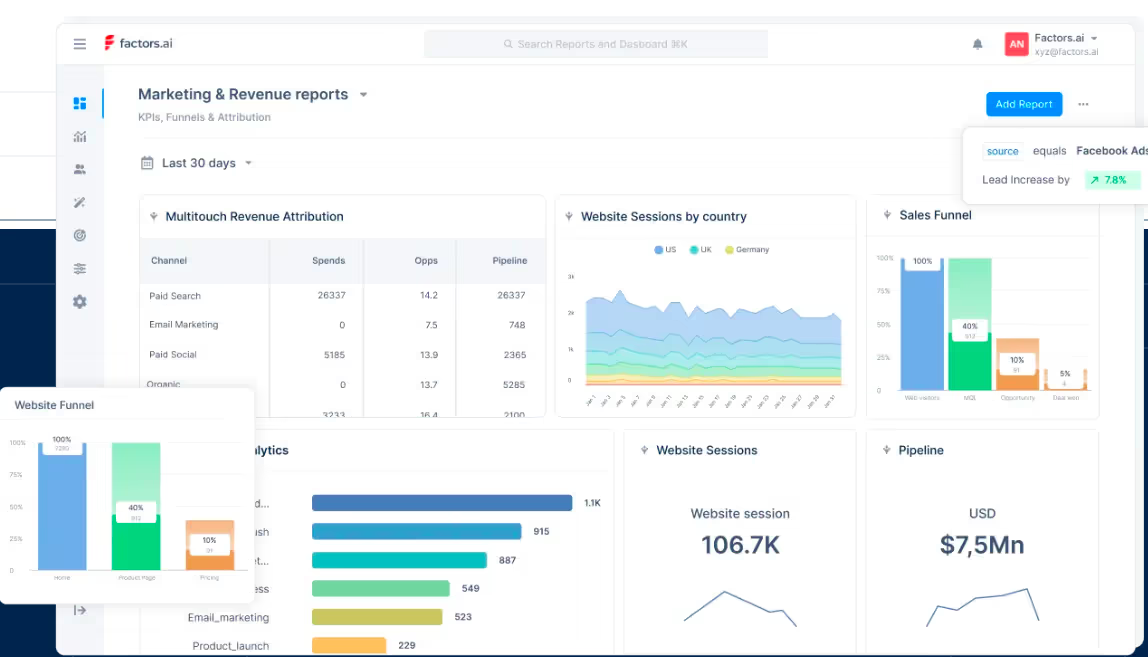
Prioritize the most critical metrics and add impactful visualizations like charts, graphs, gauges, and indicators to showcase them. For instance, use:
- Line charts to display trends over time for metrics like web traffic, conversions, etc.
- Comparison charts or pie charts to show channel effectiveness, campaign ROI, and more
- Funnel visualization to showcase drop-offs across the customer journey
- Alerts and gauges to highlight metrics nearing goals or thresholds
Optimize Information Absorption
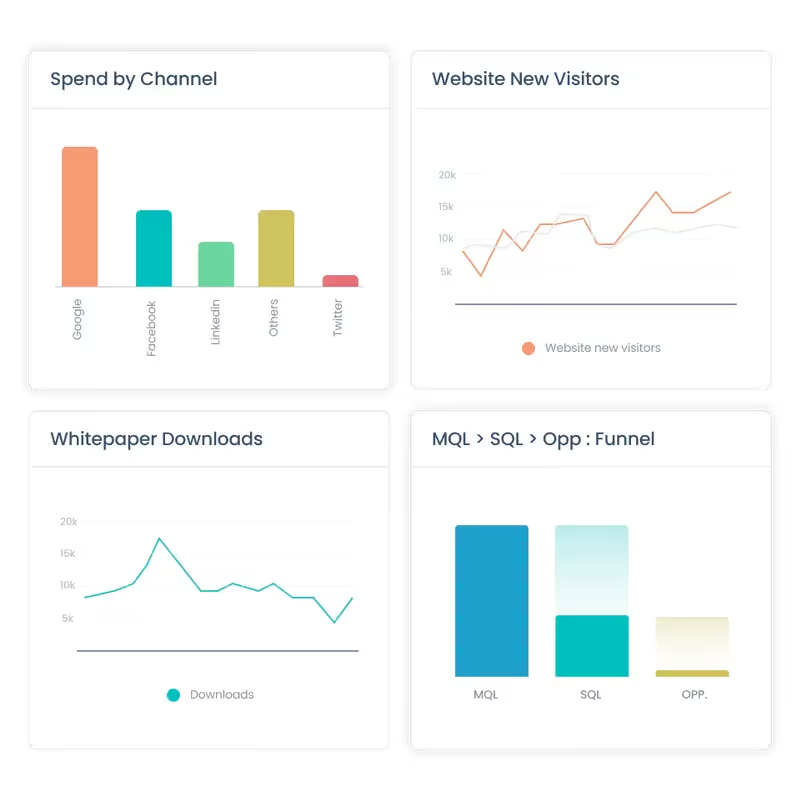
Use color coding, alerts, and trends to highlight priority areas at a glance. Make sure that your dashboards have ample white space for better data absorption.
Also, include explanatory captions and annotations to provide essential context.
Offer Intuitive Interactions
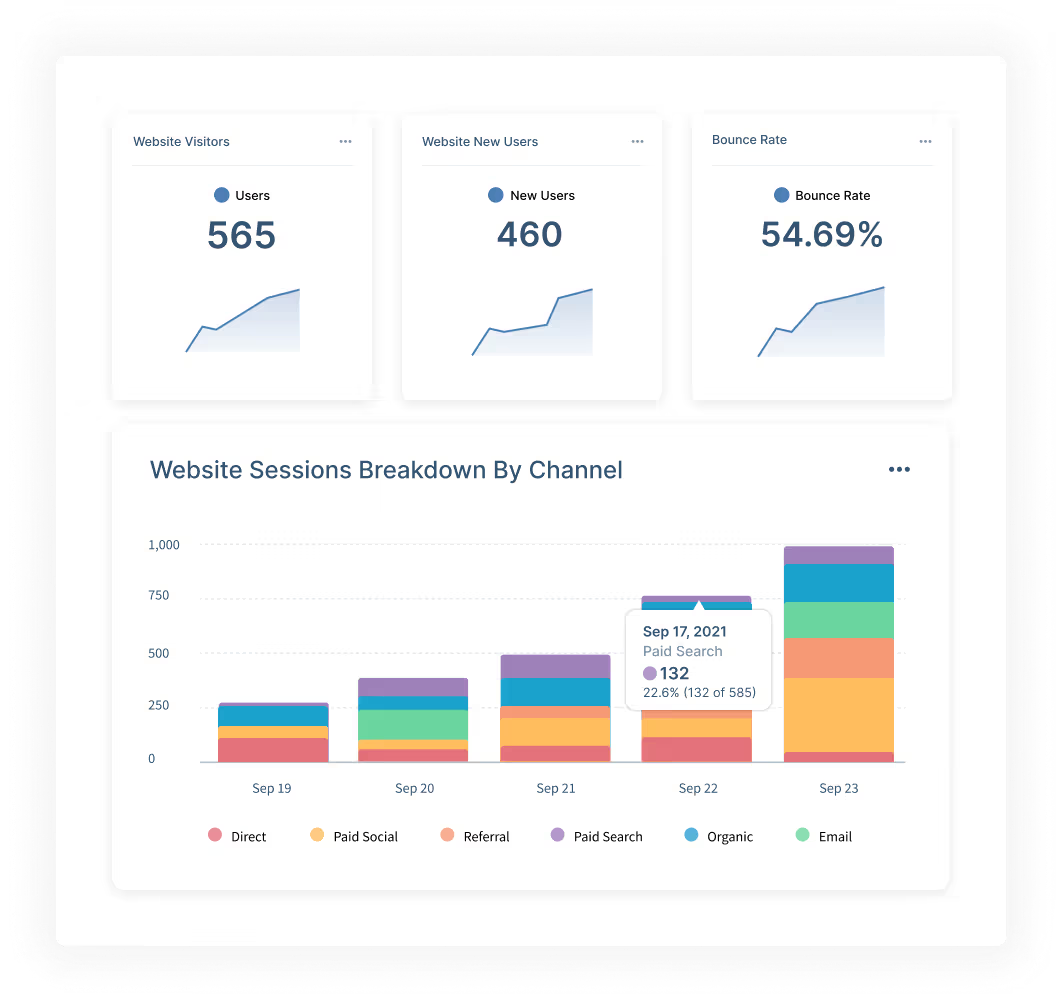
Offer intuitive interactions like drill-downs, filtering, and segmenting to customize views on demand. For instance, help users:
- Filter data by categories, campaigns, regions, or date ranges
- Drill down from aggregate metrics to detailed data breakdowns
- Isolate underperforming categories and campaigns
Such flexibility allows slicing and dicing data along different dimensions for deeper analysis.
Streamline Navigation
Create tabs or dropdowns to switch between views, campaigns, time frames, and other dimensions. Optimize compatibility across devices so users can access the dashboard anywhere conveniently.
Most importantly, align terminologies and visualizations to thought processes familiar to users through day-to-day work. Simplicity and intuitiveness accelerate adoption.
2. Unified Data Foundation Across Teams

Marketing cannot drive impact alone. Close alignment across teams provides comprehensive visibility into the end-to-end customer journey.
Break Departmental Silos
Integrate your CMO dashboard tightly with essential systems like CRM, sales analytics, web analytics, finance systems, etc. Automatically sync campaign data, lead status changes, deal progress, and other cross-functional data flows.
For instance, pull web visitor profiles from analytics platforms to enrich lead records. Or, pass lead quality assessment and scoring metrics from marketing to sales for better follow-ups.
Shared Visibility Through Attribution
Compare the performance of marketing-generated vs. sales-generated pipelines on metrics like lead quality, sales cycle times, win rates, and deal sizes.
Conduct multi-touch attribution to understand marketing's influence at each buying stage. Such unified visibility bridges departmental silos with shared goals and metrics, steering coordinated priorities across teams.
3. Flexibility to Highlight Strategic Focus Areas
While cross-functional data consolidation provides tremendous value, a one-size-fits-all dashboard rarely meets specialized business needs fully. You need the dashboard to be customizable and dynamic.
Customizable Templates
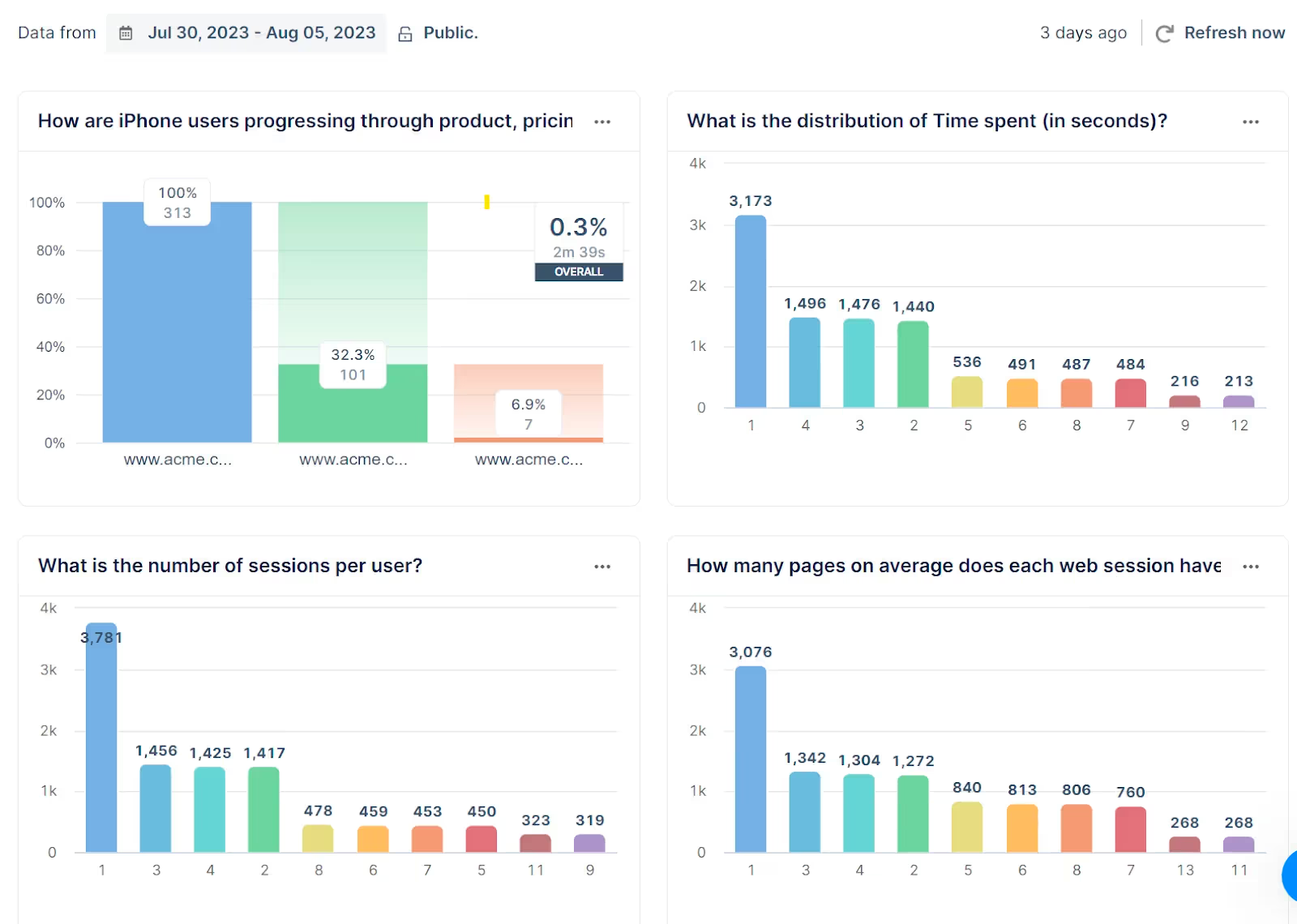
Empower users to highlight metrics aligned to their goals—broad awareness or targeted account-based sales—without relying on IT.
Provide pre-built templates for different personas and use cases that showcase industry-specific benchmarks more relevant to their context.
Dynamic Filtering and Segmentation
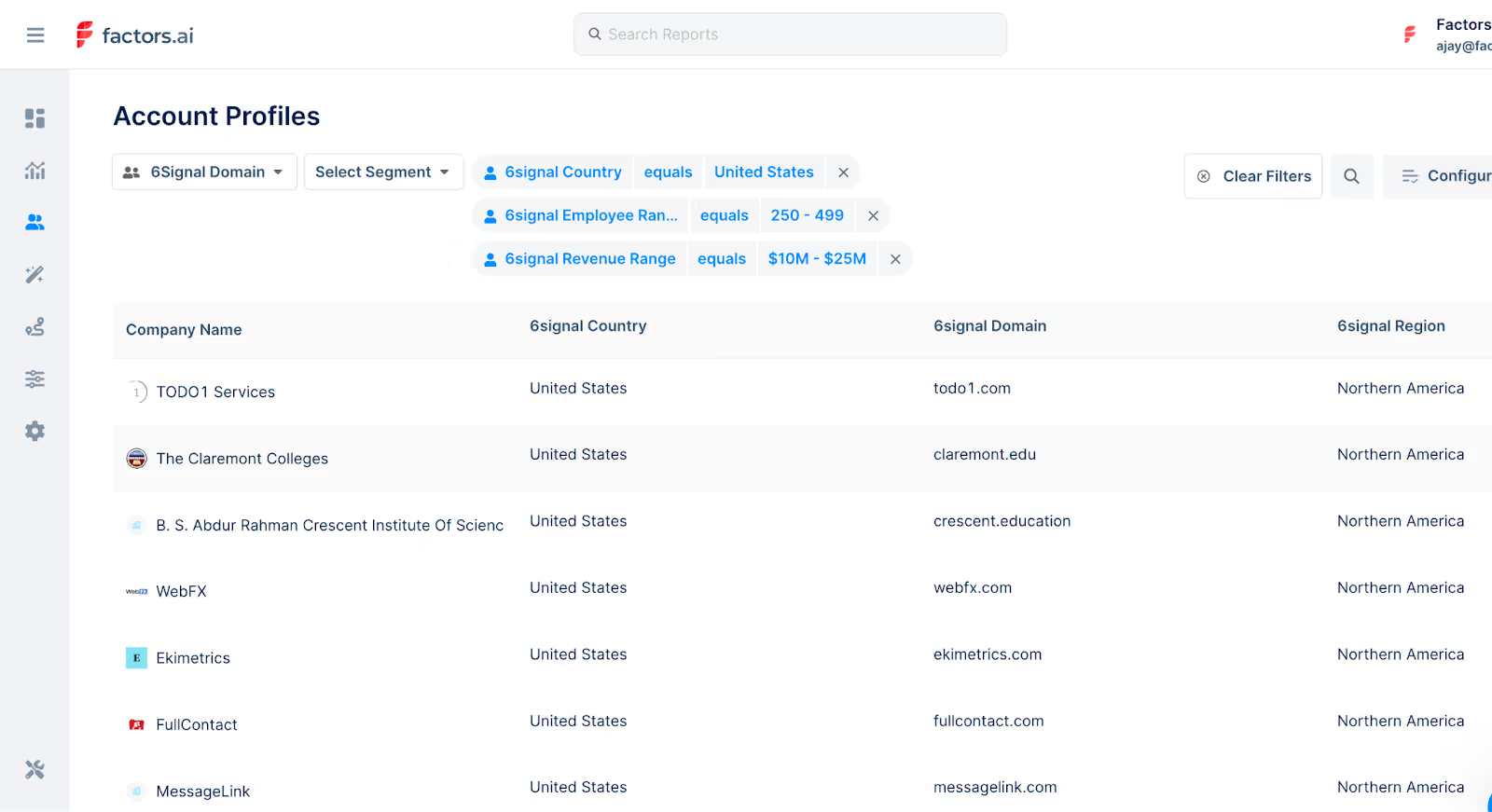
Offer easy-to-use customization options such as an intuitive template builder interface. Let marketers filter data views dynamically by parameters like region, customer persona, product line, etc.
Such flexibility allows teams to analyze performance through different lenses—whether for the leadership team or campaign managers. As business objectives evolve, custom-tailored dashboards stay focused on what matters most.
4. Ongoing Optimization and Iteration
No dashboard gets designed perfectly right from the beginning. As marketing campaigns and strategies adapt in response to market dynamics, your dashboards also continuously realign to maintain relevance.
User Testing and Feedback Analysis
Monitor usage patterns and user feedback to identify navigation, metric, or visualization enhancements: track clicks, hovers, and other interactions to uncover usability issues. Conduct user surveys and interviews to gather feedback.
Maintain Flexibility
Maintain flexibility for adding new datasets from emerging sources and channels. Continually experiment, test, and optimize to fulfill ever-changing information needs most effectively.
Through an intuitive and action-oriented design backed by an integrated, flexible data foundation, the CMO dashboard becomes a powerful nerve center driving shared visibility, coordinated execution, and data-informed decisions across the business.
CMO Dashboard KPIs and Metrics
A CMO dashboard can include tons of KPIs and metrics depending on what you’re trying to track. However, below are the ones that are of topmost priority:
1. Top-of-the-funnel metrics such as engagement, traffic, leads
Top-of-the-funnel metrics are brand awareness metrics like the engagement rate, traffic, and leads generated. Most SaaS marketing executives track these to attract the target audience and turn them into long-term subscribers.
1. Engagement rates are metrics used to measure and track the active involvement of your target audience for the content you produce. The engagement rate formula is:
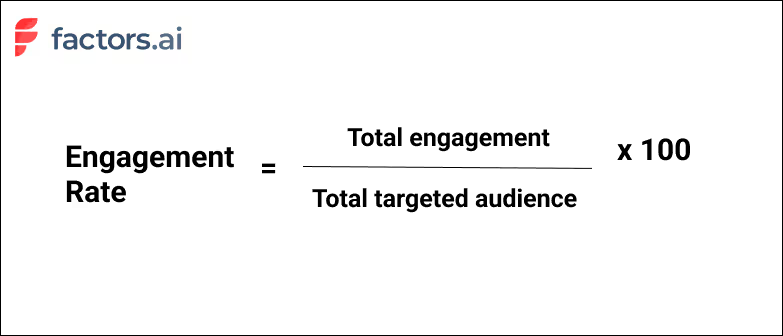
2. Traffic for SaaS companies is the volume or the total number of visitors their website gets over a certain time period.
3. Leads generated is a mandatory sales KPI every SaaS company must track. Measuring leads lets you uncover issues and nurture prospects further.
Why do these metrics matter?
Top-of-the-funnel metrics help measure the overall exposure of the target audience to your marketing efforts. Tracking and measuring them gives insight into what can help minimize roadblocks that stop prospects from signing up.
2. Conversion rates and efficiency
1. Conversion rates: measure the number of targeted users who converted from unknown prospects to engaged contacts. The higher the conversion rate, the more impact your marketing strategies have. The formula to calculate the conversion rate is:
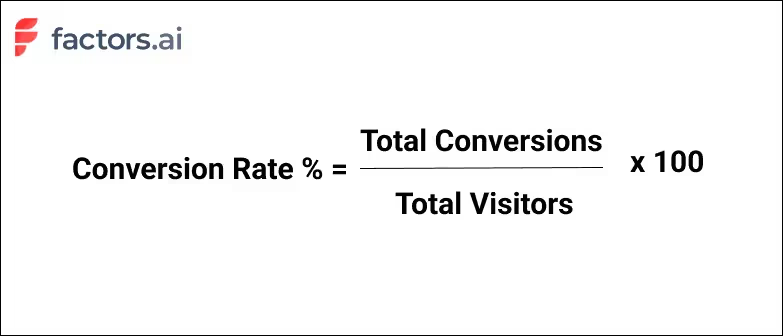
2. Efficiency: In marketing, the ROI measures the overall performance of your marketing efforts, and conversion rates directly indicate the performance. That means increasing conversion rates while reducing acquisition costs promises a better ROI and shows better strategy efficiency. The formula to calculate marketing efficiency is:
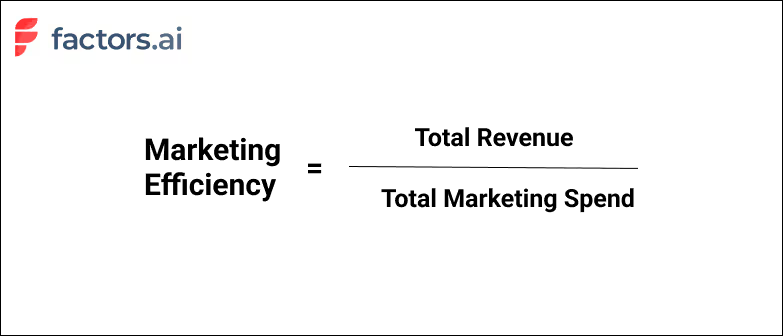
Why do these metrics matter?
Conversion rates and efficiency directly reflect how well your SaaS marketing activities are executed and determine the overall effectiveness of your business campaigns.
3. Cost of acquisition by channel
It’s best to track certain KPIs by marketing channels, such as social media, emails, ads, organic search, etc. Calculating the cost of customer acquisition (CAC) for each channel is one such KPI that indicates the marketing expenses spent on obtaining customers.The formula to calculate CAC by channel is:
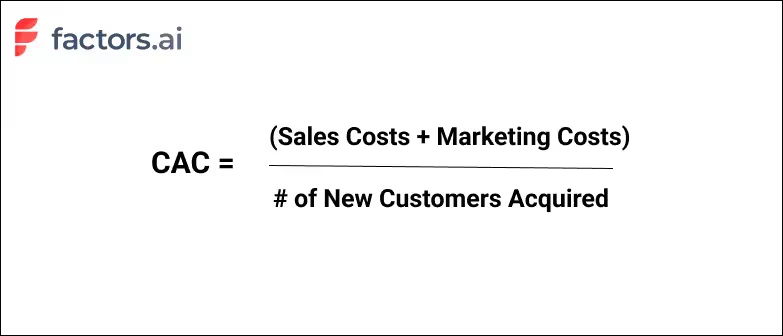
Why does this metric matter?
Measuring CAC lets you decide whether or not to pursue marketing for a particular channel and demonstrates high-performing marketing channels having low CAC.
4. Retention and churn rates
Customer retention and churn rates are opposites that indicate the number of customers retained or lost over a time period. The formula to calculate churn rate is:
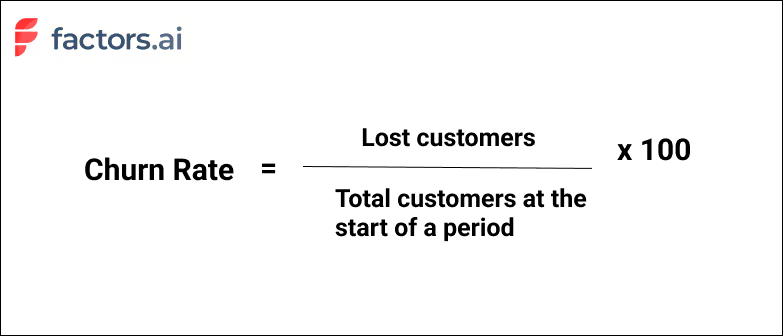
Why are these metrics important?
Customer churn and retention rates are one of the most important metrics for SaaS CMOs. Measuring churn rate can help shed light on why subscribers are refusing to renew your service, and based on high or low retention rates, you can decide whether to pursue the same strategies or refresh them.
5. Customer lifetime value
Customer lifetime value, or CLV, indicates the average pay throughout a customer’s relationship with your company. It is a critical SaaS KPI to showcase revenue as it conveys a customer’s worth on average. The formula to calculate CLV is:

Why does this metric matter?
CLV is a critical SaaS business viability measure. It is essential for understanding the business value each customer brings and your SaaS company’s long-term potential.
6. Revenue and pipeline velocity by channel source
1. Revenue by channel source tracked by CMOs indicates how well their ads, campaigns, and other marketing efforts perform based on their source. Additionally, it tells you the aggregate revenue earned from successful conversions from each outlet.
2. Pipeline velocity by channel source is a key KPI indicating the speed at which leads move through your sales pipeline for each channel source.
Why do these metrics matter?
A high pipeline velocity means smoother onboarding processes and better conversions. So tracking this and revenue by channel source over various periods lets you improve conversions from each source.
7. Revenue Growth Percentage
Revenue growth percentage indicates how rapidly total company revenue increases over a set time, typically month-over-month or year-over-year. It shows the overall momentum and health of the business.
The formula to calculate revenue growth is straightforward—take the revenue difference between the current and past periods and divide that by the one-time period revenue.
For example, for year over year revenue growth, use the formula:
((Current Yearly Revenue - Last Year's Yearly Revenue) / Last Year's Yearly Revenue) x 100.
Why does this metric matter?
Monitoring rapid or declining growth % signals how well marketing and sales efforts are faring and hitting targets. When coupled with cost metrics, it also showcases profitability trends. Understanding growth by revenue streams also enables executives to double down on the highest traction channels.
8. Customer Lifetime Value
Customer lifetime value totals the likely earnings a business can generate from customers throughout their tenure. In essence, it conveys an average customer's worth.
The formula factors average order size, purchase frequency in a given period, and the average lifespan.
For instance, CLV may be calculated as: CLV = Average Order Value x Purchase Frequency Per Year x Average Lifespan in Years.
Why does this metric matter?
Tracking CLV over annual cohorts helps spotlight content, features, or channel innovations that make customers stickier. Comparing CLV vs acquisition cost also determines the breakeven period to recover expenses.
9. Cost Per Lead
Cost per lead signifies the average expenditure to generate a qualified marketing lead. It is calculated by dividing total lead gen marketing spend by the number of leads captured.
CPL can be calculated as: Total marketing dollars spent / Number of leads
If you spent $1000 to get 10 customers, that’s 1000/10 = $100 — Your CPL is $100.
Why does this metric matter?
Monitoring CPL trends determines the influence of brand equity on the sales funnel—a strong brand lowers CPL over time.
Comparing CPL by channel also helps optimize spending by identifying the lowest-cost customer acquisition sources. Analyzing CPL alongside customer lifetime value further ascertains profitable activities.
10. Brand Search Volume

Brand search volume measures monthly search queries for your brand name and keywords. Sudden surges or declines show changing consumer interest.
Why does this metric matter?
Tracks brand visibility gains/losses to correlate awareness-building campaigns and events. Guides keyword targeting and content strategies.
Creating Effective CMO Dashboards in Factors AI
Over the course of this article, we’ve covered what a CMO dashboard is, what its benefits are, and a few common metrics for CMOs to track. But constructing a comprehensive CMO dashboard is easier said than done — unless of course, you leverage a tailor-made dashboarding tool like Factors.
Factors unifies and reports data across complex buyer journeys involving multiple stakeholders, touchpoints, and channels under one roof. What does this mean for you? No more individual tools to analyze campaign performance, website engagement, and pipeline/revenue related metrics.
It’s simply all the metrics you care about as CMO in one, intuitive, customizable dashboard. Here are a few nifty features loved by CMOs:
- Ad hoc filters and breakdowns: Slice and dice metrics and KPIs with a wide range of filters and breakdowns to answer questions like: “How does conversion rate vary between companies with at least 200 employees and smaller teams of less than 50?” or “What’s the difference in sales velocity between leads from paid search and organic social?”
- Automated AI-fueled insights: It’s one thing to have your data in one place — but how can CMOs make sense of the numbers? Factors offers automated insights into what’s helping and hurting a specific conversion goal. What’s driving demo form submissions? Our Explain engine may suggest Linkedin campaigns and the pricing page have a positive influence while Display ads and email outreach is limiting performance. This helps the larger team improve resource allocation and drive ROI.
- Custom funnels, KPIs, and properties: Every business has different requirements. This is no different when it comes to reporting and dashboarding needs. Factors supports limitless customizations to KPIs and properties so CMO dashboards can be tailor-made to the what matters most to you.
A SaaS CMO dashboard is a centralized tool that visualizes key marketing metrics, such as conversions, traffic, customer acquisition cost, churn, and pipeline velocity, across channels. It enables CMOs to make data-driven decisions, optimize strategies, and align teams effectively.
Essential Features of a SaaS CMO Dashboard:
- Intuitive Design: Easy-to-use interface that helps users quickly understand performance.
- Integrated Data Sources: Combines data from multiple channels and systems for a comprehensive view.
- Real-time Insights: Provides up-to-the-minute information to make fast, informed decisions.
Enhancing with Factors:
- Automated Data Consolidation: Factors.ai streamlines data collection and reporting.
- Actionable Analytics: Provides insights that drive optimization and increase ROI.
- Improved Operational Efficiency: Reduces manual tasks, allowing marketing teams to focus on strategy and execution.
Curious to see Factors in action? Schedule a personalized demo here!
A SaaS CMO dashboard is a centralized tool that visualizes key marketing metrics—such as conversions, traffic, customer acquisition cost, churn, and pipeline velocity—across channels. It enables CMOs to make data-driven decisions, optimize strategies, and align teams effectively.
Essential Features of a SaaS CMO Dashboard:
- Intuitive Design: Easy-to-use interface that helps users quickly understand performance.
- Integrated Data Sources: Combines data from multiple channels and systems for a comprehensive view.
- Real-time Insights: Provides up-to-the-minute information to make fast, informed decisions.
Enhancing with Factors.ai:
- Automated Data Consolidation: Factors.ai streamlines data collection and reporting.
- Actionable Analytics: Provides insights that drive optimization and increase ROI.
- Improved Operational Efficiency: Reduces manual tasks, allowing marketing teams to focus on strategy and execution.

Best Sales Intelligence Tools In 2025- Benefits, Limitations & Pricing
Sales intelligence tools provide marketing and sales teams with relevant data to refine outreach and targeting workflows and performance. Leveraging sales intelligence tools help drive pipeline by discovering high-intent target accounts (with reverse IP-lookup account identification), surfacing relevant contact data (phone numbers, mail IDs, etc), enriching account profiles (firmographics and technographics), and/or reporting GTM metrics and KPIs. In short, sales intelligence tools provide insights to support better marketing and sales efforts.
Needless to say, sales intelligence relies crucially on accurate, up-to-date data to be of any value. Workflow automations, integrations, UI, customer support, and pricing plans are other factors you should consider when evaluating a sales intelligence tool.
While there’s no shortage of sales intelligence solutions out there, it can be challenging to pick one that aligns with your requirements and budget. The following article reviews the top 8 sales intelligence tools for your consideration.
TL;DR
- Sales intelligence tools enable smarter GTM execution by identifying in-market accounts and relevant buyer contacts across web activity, CRM, and third-party data.
- Top solutions include Factors.ai, Clearbit, Apollo, and LinkedIn Sales Navigator, each with unique strengths in data accuracy, automation, enrichment, and outreach.
- Key evaluation criteria include data coverage, integration flexibility, pricing structure, ease of use, and customer support responsiveness.
- Real-time engagement tracking and automation features help accelerate buyer journeys, personalize touchpoints, and measure true pipeline impact.
Sales Intelligence - Account Level
Depending on the nature of your business, your total addressable market may be very, very large. Especially for SMEs with limited resources, it wouldn’t make sense to go after each and every account in your TAM. Instead, it's important to identify and prioritize those ICP accounts that showcase the most buying intent with your brand.
Account intelligence tools use reverse IP-lookup to do just that: identify and qualify anonymous, high-intent companies that are already engaging with your brand but are yet to convert. Account intelligence tools deanonymize traffic to reveal account names, firmographics, technographics and more.
With account intelligence tools, you may target warm accounts as opposed to cold, brand-unaware ones. This, unsurprisingly, results in more conversions than ever before. Here are 4 robust account intelligence platforms for your consideration:
1. Factors.AI

Factors is an AI-fuelled account intelligence solution built upon strong analytics and attribution foundations for B2B teams. Factors provides a wide range of features including account identification, account scoring, workflow automations, multi-touch attribution and more.
Features
- Account identification - discover anonymous accounts interacting with your brand
- Account enrichment - enrich accounts with firmographics and technographics
- Analytics & attribution - KPI reporting, funnels, path analysis, multi-touch attribution and more
- Journeys & scoring - Bird’s eye view of customer journeys and account scoring based on cross-channel engagement
- Workflow automations - Configure real-time alerts, trigger-based emails, CRM updates and more based on intent signals
Benefits
- Data-accuracy - Factors works with industry-leading data partners including 6sense and Clearbit to deliver accurate account identification match rates of up to 64%. This includes firmographics and technographics such as geos, industry, revenue range, employee headcount, etc.
- Holistic scoring - Deep-rooted collaborations with LinkedIn and G2 in addition to website engagement ensures that accounts are scored holistically across the most common channels
- Robust analytics - Given that Factors is built upon strong analytics and attribution foundations, it provides unmatched granularity in terms of reporting and reporting techniques — so you can make data driven decisions, effortlessly
Limitations
- Contact-level data: At the moment, Factors does not provide contact-level data such as email IDs or phone numbers. Instead, users will have to integrate this data from a contact database provider like Apollo or ZoomInfo.
- Native integrations: At the moment, Factors provides native integrations with the most popular B2B ad platforms, CRMs, MAPs, CDPs, and more. That being said, it misses out on integrations with lesser used platforms like Zoho. Note that data may still be pushed from Factors to nearly any other tool in the webhooks (Zapier, Make.com, etc).
Pricing
Factors pricing is based on the number of accounts identified (or volume of monthly website traffic). Factors does offer a free trial and a free plan. Learn more about Factors pricing here: www.factors.ai/pricing
2. Clearbit

Clearbit is an industry-leading sales and marketing intelligence platform that helps teams gain deeper insights into their customers, enhancing marketing efforts and sales strategies. Through a suite of APIs, Clearbit integrates with existing systems, providing real-time identification and enrichment data.
Features
- Reveal - Clearbit identifies anonymous website visitors using IP-lookup. Given that every tool on this list does this, data accuracy and pricing are two important considerations when differentiating between alternatives.
- Enrichment - Clearbit also provides firmographics from over 250 data sources. This includes technologies, headcount, revenue, location, contact information, and more.
- Capture - like Leadfeeder Contacts, identifies best-fit contacts from companies visiting your website to reach out to with retargeting campaigns or outbound efforts
Benefits
- Intuitive UI - Clearbit is a well-established platform with an intuitive, accessible user interface making it easy to plug and play for most teams.
- Strong integrations - Clearbit provides deeper, two-way integrations with CRMs, Internals comms, and other everyday GTM platforms as compared to other tools on this list.
- Contact database - In addition to account level data, Clearbit also provides a contact database to streamline the outreach process by recommending relevant people to get in touch with.

Limitations
- Pricing - While Clearbit boasts an impressive database, it’s definitely a more premium product. Pricing starts at around $12,000 annually for its more basic plans. This might be inaccessible for early-stage SME teams.
Pricing
Clearbit does not openly reveal its pricing but estimates place it starting at about $12,000-$20,000 a year. Learn more about Clearbit pricing by connecting with their sales team.
3. Leadsquared

LeadSquared CRM is a sales and marketing automation platform to boost sales productivity and revenue outcomes. Salespeople can sell a lot faster and smarter by using LeadSquared's customizable workflows, reminder systems, and lead scoring features. The tool also provides complete visibility into the prospects activities and preferences in a single view, for a more personalized selling experience.
Features
- Automated Lead Management: Capture, distribute, and track leads at every stage of the sales funnel.
- Reports and Analytics: In-depth reports for managers to analyze sales performance, forecast sales, and manage the team's targets.
- Segmented User Lists: Assign customers to lists based on various parameters such as demographics, preferences, etc. Businesses can set up trigger-based communication for every list to personalize communication.
- Mobile CRM: Track field sales activities and interactions as your sales reps get through the day. The Mobile CRM also allows them to upload documents and lead data from their phone.
- Built-in-dialer: Set up one-click calls to prospects, manage call logs, recordings, and notes by integrating with IVR solutions.
Benefits
- Completely customizable: LeadSquared is a good fit for businesses of all sizes, no matter how complicated their workflows are. The product and workflows can be customized to solve specific business challenges.
- Integrations: All your data can be centralized on the CRM because it can be easily integrated with most of the popular tools.
- Security: LeadSquared is compliant with all the laws and regulations related to data security. So, businesses never have to worry about the data they add on the platform.

Limitations
Initial training: Users who are new to using a CRM might require training while setting up complex automation and reporting.
Pricing
LeadSquared offers three plans based on the features businesses may require. Here are the specifications of these plans:

4. Leadfeeder/Dealfront
Leadfeeder [Now Dealfront] is another popular account intelligence solution that’s been around for quite some time. It has recently rebranded itself as Dealfront — a Europe-centric GTM intelligence platform. This has resulted in several former customers looking for Leadfeeder Alternatives. That being said, it’s still a comprehensive solution depending on your use-case.
Features
- Account identification - As with other tools on this account intelligence list, Leadfeeder identifies the names of the companies visiting your website.
- Leadfeeder Contacts - As with Clearbit, Leadfeeder also provides contact-level data based on the accounts visiting your website
Benefits
- Europe-centric data - If you’re looking for Europe-focused sales intelligence, Leadfeeder may be the best choice for you, given that it especially specializes in European geographies.
Limitations
- Shacky integrations - While Leadfeeder provides a wide range of integrations, users often find discrepancies and inaccuracies in terms of data synchronization.
- Poor customer success - Several users complain about Leadfeeder’s poor customer success, claiming it to be pushy and unhelpful.


Pricing
As with most other tools on this list, Leadfeeder pricing is based on the volume of data consumed. Leadfeeder does offer a free plan. Leadfeeder pricing starts at about $150.

5. Albacross

Finally, we arrive at Albacross. Albacross is another leading sales intelligence tool. The Sweden-based platform works with 10,000+ companies to provide data enrichment, sales alerts and intent signals.
Features
- Account Identification: Albacross identifies anonymous accounts, firmographic information and visitor intent. Albacross features one of the largest proprietary first-party databases in the world.
- Personalization: Albacross natively integrates with popular personalization tools such as Optimizely and VWO to customize website content based on who’s visiting the site.
- Display ads: Albacross can also launch and monitor display ads within the platform itself. The software partners with several publicists such as The New York Times and Daily Mail to distribute account-level targeted ads.
Benefits
- Experimenting: Albacross offers the unique benefit to experiment and run A/B tests in conjunction with visitor identification and intent data.
- Customer success: Several reviews rave about Albacross’s stellar customer success management. Given that Albacross is considered to be an involved, enterprise-level tool, it’s essential to have this level of support to get the most value out of the product.

Limitations
- Rigid firmographics and filters - Albacross lacks agility when it comes to filters and breakdowns. Reviews reveal that, unlike other tools on this list, Albacross is currently unable to filter identified companies based on firmographics such as name or size. As a result, users seem to find sorting and reporting somewhat challenging.
- Buggy integrations: Multiple reviews claim that Albacross’s integrations, especially with CRMs like Salesforce, could do with some work. Given that visitor identification is primarily used to support ABM, this can be a major drawback to B2B teams.
- Limited documentation and resources make users overly reliant on customer success teams

Sales Intelligence - Contact Level
Identifying in-market accounts is a fantastic start to optimizing GTM performance. But once you have a set of target accounts, you also need to know who to reach out to within those accounts for the best chance of conversions. You need phone numbers, email IDs, and LinkedIn profiles to get in touch with the relevant stakeholders and move forward with outreach and targeting.
This next set of sales intelligence tools helps with just that: Identifying relevant contacts and their contact information from your target accounts using enormous contact databases.
6. Apollo
Apollo is a sales intelligence and engagement platform. It is an end-to-end sales solution platform with over 265 million contacts. It provides access to rich buyer data, analytical insights and automated and personalized workflows for outreach.
Features
- Enrich: Apollo helps search and enrich lead data leveraging their extensive B2B database.
- Prospect: Using over 65 data attributes, Apollo helps you build lists and filter leads with precision
- Engage: automated sequencing across channels like LinkedIn, SMS, email, etc with AI-powered hyper personalisation.
Benefits
- Powerful Search Tool: The search capabilities are robust, allowing you to fine-tune our searches for targeted sales prospecting.
- Great Support: The customer support team has been responsive and helpful whenever we've had questions or needed assistance.

Limitations
Surface-level LinkedIn Integration: No cross-platform automation available with LinkedIn
Steep learning curve: The numerous customizations and variables can be overwhelming for beginners
Pricing
Apollo.io has user based pricing model with a basic plan that starts at $49 dollars/user per month:

7. Slintel
Slintel is an advanced sales intelligence software that provides valuable technographic data and helps enhance leads by offering precise details about prospects, including email addresses and contact information.
Features
- Buyer enrichment: rich database which provides additional information about their leads and prospects, such as company size, location, and industry
- Buyer intent tracking: Slintel has a valuable indicator to signify a lead’s readiness to purchase.
- People Profiles: Slintel’s database also provides detailed information about the individuals within a company, including their job titles, responsibilities, and contact information.
Benefits
- Technographic filtering: Slintel features unique filters based on understanding the technologies that their leads and prospects are using.
- API suite: Slintel’s API offers range of integrations that help connect with your teams’ current operating system, workflow, and technological infrastructure
Limitations
No mobile credits: Slintel has overlooked an important outbound channel by not providing mobile credits in any of their plans.
Pricing
Slintel has tiered pricing and prices for each plan vary based on the number of leads and users, as well as the duration of the subscription.

8. LinkedIn Sales Navigator
LinkedIn Sales Navigator is a popular sales intelligence that enables professionals to expand their network, find potential customers, and engage in effective lead generation. It offers advanced search capabilities, personalized insights, and seamless integration with other sales tools for enhanced prospecting and relationship building.
Features
- Search Feature: The Sales Navigator advanced search function gives reps the power to more narrowly target their ideal leads and discover relevant connections.
- Automated Lead Generation: The Lead Recommendations feature suggests relevant leads based on your sales preferences, search history, profile views, and past saved leads.
- Real-time updates: Sales Navigstor provides real-time updates on their leads and accounts, including job changes, company updates, and news mentions.
- Customized Lists: Users can create and save customized lead and account lists for targeted outreach.
Benefits
- Lead Tracking and Notes: Users can save leads and accounts, add notes, and track interactions, helping them stay organized and keep a record of their sales activities.
- InMail Credits: users get a certain number of InMail credits with a sales navigator subscription, which allow them to send direct messages to LinkedIn members even if they are not connected.
Limitations
- Cost: LinkedIn Sales Navigator is a premium service and can be relatively expensive, especially for individual users or small businesses. The cost may be a barrier for some users.
- Learning Curve: The platform has a steeper learning curve and it may take time to fully understand and utilize all its features effectively.
- Limited InMail Credits: While Sales Navigator provides limited InMail credits. If users exhaust their credits, they may need to purchase additional ones, which is costly.
Pricing
LinkedIn Sales Navigator offers three pricing tiers: Core, Advanced, and Advanced Plus:

9. Lusha
Lusha is a lead generation and data enrichment tool that aims to help companies generate qualified leads and maximize conversions. It helps manage business leads, company contacts, and B2B databases fo better sales prospecting.
Features
- Team: Lusha lets you add team members and create different groups within the application to facilitate collaboration.
- Technology Filter: Lusha's Technographic filters that give businesses the ability to target companies based on the technology stack they are using.
- Salesforce Data Enrichment: Lusha's Salesforce Data Enrichment feature automatically enriches Salesforce records with accurate contact and company data.
- Intent: Lusha allows you to filkter prospects based on their behavioral signals
Benefits
- High Accuracy: Lusha claims the highest accuracy rate in the entire industry, claiming 81% accurate emails and phone numbers to their users for cold outreach.
- User-friendly interface: The platform interface is intuitive and easy to navigate for beginners.
- Chrome extension: Lusha’s chrome extension is a value add that makes it easy to get the contact information from the browser directly.
- Responsive customer support: The customer support team is extremely responsive and friendly, helping improve the user experience.
Limitations
Data Security: there are reports of outrage from customers that accuse Lusha of selling their personal information to third parties.
Pricing
Much like most softwares on this list, Lusha has a usage based pricing model with 4 plans- free, pro, premium and scale:

10. SDRx
SDRx is an AI SDR that builds targeted lists, conducts account research, and crafts personalized emails with follow-ups tailored to the prospect's journey. SDRx works like a 24/7 sales assistant, managing your outreach activities so you can dedicate your time to meaningful prospect interactions.

Features:
- List Building: Identifies and generates precise account and prospect lists matching Ideal Customer Profiles (ICPs).
- Comprehensive Account Research: Collects actionable insights from internal and external data sources.
- Personalized Email Creation: Leverages 25 proven email frameworks to maximize response rates.
- Multi-Channel Outreach: Automatically customizes follow-up frequency and messaging based on the prospect's buying stage.
- 24/7/365 Continuous Operation: Eliminates ramp time and burnout associated with traditional sales development.
Benefits:
SDRx's claims to combine deep account research, end-to-end email deliverability, and the use of 25 copywriting frameworks to conduct multi-channel outreach.
Pricing:
Pricing details are available upon request.
Key Considerations When Choosing Sales Intelligence Software
Picking the right sales intelligence software in 2025 isn’t just about ticking off a list of features—it’s about finding the perfect fit for your business. So, what should you be looking for?
First up, data quality and coverage. You want a platform that delivers verified, up-to-date info across your target markets. Make sure the data gets refreshed regularly and covers all the geographical areas where you’re active.
Next, think about integration capabilities. Your new tool should play nicely with your current tech setup, especially your CRM. A seamless connection means your team won’t have to juggle different platforms, keeping everything running smoothly.
When considering pricing and ROI, don’t just focus on the price tag. Look at user limits, data credits, and any extra features you might need as you grow. Consider the potential return on investment by factoring in improved conversion rates and time saved.
User experience? It’s more crucial than ever. Your team should be able to navigate the software easily without needing a ton of training. Look for clean interfaces and dashboards you can customize to fit your workflow.
And don’t forget to check out the customer support quality. The top tools come with thorough onboarding, responsive support teams, and educational resources to help you get the most out of your investment. Regular check-ins and dedicated success managers can be game-changers, especially for larger rollouts.
In the end, choosing the right sales intelligence software is all about finding a solution that feels like it was made just for you and your business.
The Best Sales Intelligence Tools to Drive High-Intent B2B Pipeline
Choosing the right sales intelligence tool is essential for modern B2B teams aiming to work smarter, not just harder. With today’s buyers conducting research independently across platforms, identifying and engaging the right accounts at the right time can be the difference between pipeline acceleration and wasted outreach.
As we saw, sales intelligence tools enhance marketing and sales efforts by providing data-driven insights for better targeting and outreach.
- Key Capabilities: Reverse IP-lookup, contact data enrichment, firmographics, technographics, and GTM analytics.
- Selection Criteria: Data coverage, integration flexibility, pricing, UX, and customer support.
- Top Solutions: Factors.ai, Clearbit, Apollo, and LinkedIn Sales Navigator—each excelling in data accuracy, automation, and outreach.
The above definitive guide compares 10 leading sales intelligence platforms—across both account-level and contact-level categories. Tools like Factors.ai, Clearbit, Apollo, and Slintel offer features like reverse IP lookup, firmographic enrichment, contact data access, real-time alerts, and automation that allow teams to focus their efforts on high-conversion opportunities.
From budget-conscious startups to enterprise-grade go-to-market teams, each platform serves a different need. You’ll also find breakdowns of strengths, limitations, and pricing transparency to help evaluate fit based on data quality, integrations, user experience, and ROI.
Whether you're optimizing ABM workflows, enhancing outbound targeting, or aligning sales and marketing around shared signals, this review helps you choose a platform that delivers results.
Top Sales Intelligence Tools for Smarter Outreach
Sales intelligence tools enhance marketing and sales efforts by providing data-driven insights for better targeting and outreach.
1. Key Capabilities: Reverse IP-lookup, contact data enrichment, firmographics, technographics, and GTM analytics.
2. Selection Criteria: Data coverage, integration flexibility, pricing, UX, and customer support.
3. Top Solutions: Factors.ai, Clearbit, Apollo, and LinkedIn Sales Navigator—each excelling in data accuracy, automation, and outreach.
Choosing the right tool ensures precise targeting, improved lead quality, and higher conversion rates.

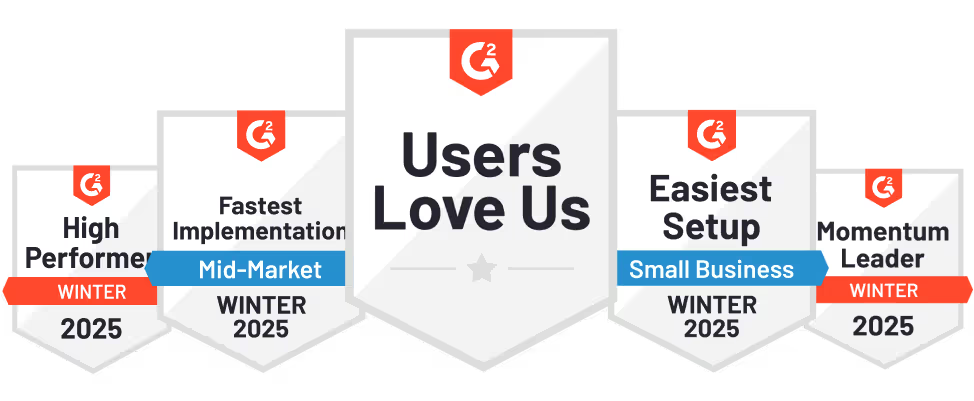
.svg)